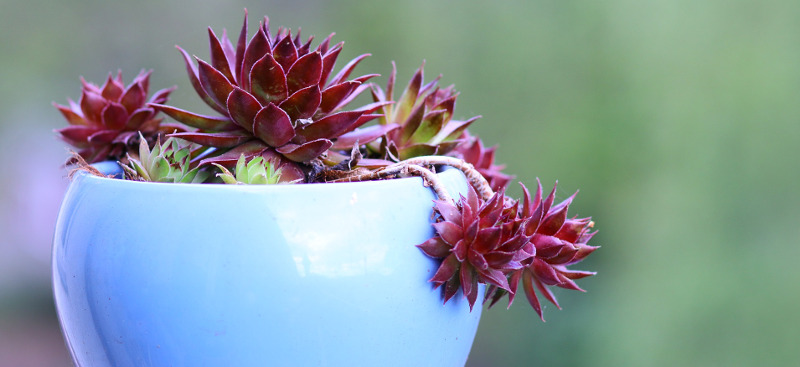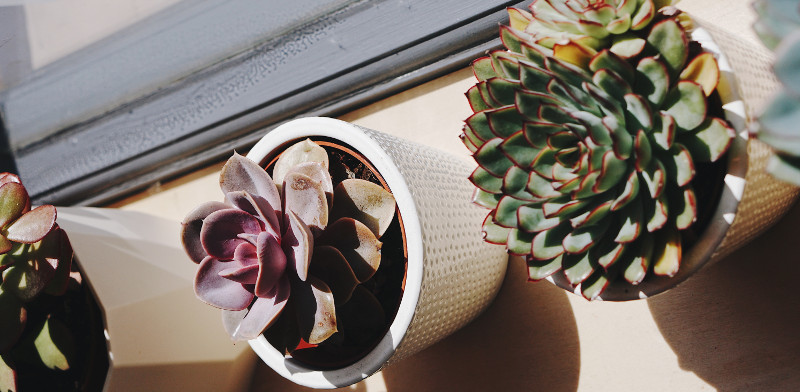Hens and chicks (Sempervivum tectorum or S. arachnoideum) can grow outdoors or indoors. In fact, they are great container plants. So, why not have some outside and inside? In colder zones, you will want to grow some of these fun plants indoors so you can enjoy them all winter. With the succulents in containers, you can move them around in winter for the best light exposure or temperature and take them outside for some summer sun. These plants are low maintenance, even thriving on neglect, and are fun indoor plants. Here are tips on caring for Hens and Chicks grown indoors.

Planting Hens and Chicks in Pots
The best pot for sempervivums is one that is long or wide and shallow, since Hens and Chicks roots do not grow very deeply and the chicks need some space for spreading. You can start with a container only a few inches larger than the one your plants come in or add them to a succulent arrangement in a container. These plants are adaptable. If you put them in a small container or crevice with the right soil and care, they might not grow as large, but they should survive. Most Hens and Chicks grow slowly, so they shouldn't need frequent repotting. It all depends on how rapidly they add chicks and whether they look too crowded in the pot.
These little succulents are not picky and do fine in basic terracotta pots. Of course, you aren't limited to traditional pots. Since they need little water, you can grow Hens and Chicks in unique containers, such as in driftwood, repurposed metal objects, homemade hypertufa planters, or on vertical planting walls.
Best Soil For Hens and Chicks in Pots
Of course, your Hens and Chicks require some water and soil, so be sure to have a way for your container to drain. This includes planting your succulent in soil that drains well. Typical cacti and succulent potting mixes work well, and rocky or gritty soil is better for these plants than a moisture-holding potting mix (a must to avoid). You can add one-fourth to one-half sand or grit to a compost or potting mix to help it drain well.

Caring For Hens and Chicks in Planters
Hens and chicks have "growth spurts" in the fall (around September to November), so they can use a little extra water in those months. After a rosette blooms, it typically dies back. All you have to do is pull it out of the container, fill the hole it leaves with some gritty or sandy mix, and wait for the chicks to fill in. Likewise, when the pot looks too crowded, divide the chicks from their mother rosette and start a new pot with the removed chicks! The plants need little to no fertilizer.
Watering Hens and Chicks in Pots
Let the potting soil dry out between watering and then give your Hens and Chicks a thorough watering. Water so the stream hits the soil around the plant, not the leaves and crown. Don't overwater your succulents.
Indoor Light and Temperature for Hens and Chicks
For best growth and flowering, Hens and Chicks need plenty of sunlight, so place the container in a room with a window. Since the sun's path changes throughout the year, you can move the plant if a room gets too little light and give it a temporary home on a sunny balcony or patio in summer. Try to make sure your plant gets at least 3 to 4 hours of sun each day. Grow lights also can help keep your sempervivum healthy.

The plants love typical indoor temperatures of around 65 to 75 degrees. If your plant seems to halt growing, it might be in a dormant state when the house is much colder or hotter than normal.
 |
Author Teresa Odle - Published 5-17-2020 |
